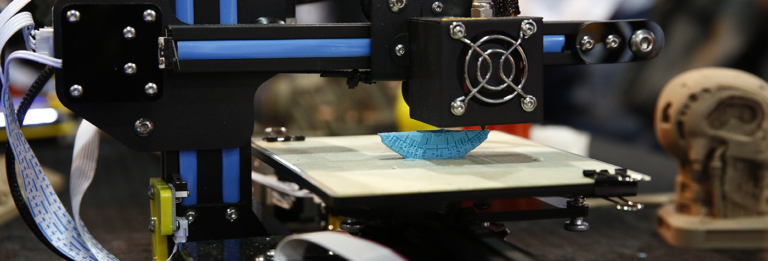ISP Privacy Principles

D.C. Tops South Korea for Fast Internet Speeds

For those of us who live and work in the Washington, D.C. area, we don’t have to look far when looking for regions with the fastest average internet speeds. According to the latest Akamai State of the Internet Report covering the fourth quarter of 2016, Washington, D.C. takes the trophy for the fastest average internet connection speed in the country, at 26.7 Mbps. D.C.’s average internet speed not only tops the FCC's broadband threshold of 25 Mbps — the first time it's ever happened — but it also slightly beat out South Korea's connectivity speed of 26.1 Mbps. While South Korea currently
The State of Online Gaming in 2017

Earlier this year, we took a look at the state of America's internet connectivity and speeds, premium television, and TV Everywhere to measure progress in our communications and entertainment marketplaces. This week, in the latest status check of our series, we examine the state of online gaming and its steady surge in popularity in U.S. households. Faster internet speeds and improved latency are definitely contributing to a better overall home gaming experience. A look at some recent web traffic statistics demonstrate not only that more people are taking up gaming as part of their online
The Price per Megabit per Second has Gone Down 90 Percent

Over the past decade, internet speeds have increased more than 125 times over. In 2007, for instance, it took 45 minutes to download a 5 GB HD movie, and today it takes 21 seconds. The huge increase in broadband speeds reflects the tremendous investment and upgrades to our networks in just ten short years. And because of the exponential growth in speeds, the average price per megabit has decreased a staggering 90 percent. As infrastructure and technology advance, it becomes easier and more cost effective to provide gigabit internet. While the last decade has been incredible, we’re looking
What Will Internet Video Usage be In 2020?

We've written quite a bit about how the internet will continue to expand immensely over the next several years. New and improved platforms for virtual reality, augmented reality, 4K TV and gaming are all in the works. So it's no surprise then that internet video will dominate digital spaces and become the primary medium that serves our entertainment, business, communication and personal needs. As we enter this new era, Cisco's Visual Networking Index 2015-2020 data gives us a closer look at a few of the key predictions that speak to how big of a role video will play in our internet usage. And
Asking the Right Questions About the Internet

Albert Einstein said, “the more I learn, the more I realize how much I don’t know.” It’s true about physics – it’s also true about how the internet works. But unlike the mysteries of the universe, the internet is a finite network. The tools that make it run, while exceedingly complex and ever-changing, are well understood. That’s why we’re making an effort to simplify and answer some of the more common questions about how the internet works. Few people know it, but the technology that runs cable's internet networks is called DOCSIS. It stands for Data Over Cable Service Interface Specification
What Cisco’s VNI Says About Connectivity in the Year 2021

The latest data from the 11th annual Cisco Visual Networking Index (VNI) Global Mobile Data Traffic Forecast (2016 to 2021) came out this month, and it’s safe to say that the projections all point to a surge in the Internet of Things, connectivity enhancements and internet speed improvements. As people around the world continue to rely on their smartphones, tablets and multiple connected devices inside and outside the home, we are surely in for the next level of connectivity in the years to come as internet service providers and technology innovators stay ahead of consumer demands. With the
The Future of Super-Fast Internet

In its early days, the web was accessed in homes via a dial-up connection that topped out at 14.4 Kbps – enough speed to download the equivalent of one mp3 song to a single device in a little over an hour. Today, almost every home in America has access to internet speeds well over 100 Mbps. That’s enough to download dozens of mp3 songs, stream multiple 4k movies, surf the web, and chat with friends on numerous devices at the same time. Clearly, America has reached the digital age. But we are in the early innings of the internet’s expansion. We know that the demands of innovators, entrepreneurs
Do Robots Hint at the Future of the Internet of Things?

Robots might always seem to be a concept that’s way off in the future, or conveyed to us as thrilling ideas we see in the big blockbuster movies, but in 2017, many already exist in our smart homes. Amazon’s ALEXA, and Google Home, which are essentially voice-operated assistants, are early forms of robots, awaiting commands that range from playing specific music, preparing the coffee pot, or finding out the score of the big game. Many of these commands are things we already perform on our own mobile devices. But at CES last week, where the robotics marketplace premiered some of the most
What We're Looking Forward to at CES 2017!

Another New Year, another trip to Las Vegas for CES – the Consumer Electronics Show. Put on by our friends at CTA, the annual technology bonanza is an opportunity for the world peek into the future and see what’s in store for digital devices in 2017 and beyond. On display will be everything from the latest TVs and web-connected devices to next generation washing machines and even cars of the future. For NCTA, it’s a chance to see what devices will be in the homes and offices of the not-too-distant future. We’ll be exploring tens of thousands of square feet of show space, asking ourselves,
